我怎样才能除去地下室墙壁中隔汽层和隔热层之间的湿气?
- Save
- Like
- Comment(50)
- Share
D
How can I get rid of moisture between the vapor barrier and the insulation in a basement?
David Mitchell
Aug. 14, 2018Last updated: Aug. 1, 2020
这是一所相当新的房子(大约有一年的历史)。混凝土地下室基础墙是框架(木材),绝缘,用塑料蒸汽屏障密封,但不是干墙。
I am led to believe that, during construction, the builder didn't immediately seal around the basement windows before he installed the insulation in the basement. Subsequently it probably rained and moisture got in through the unsealed basement windows. Now, I can see the condensation on the inside of the vapor barrier i.e. the side closest to the insulation. The vapor barrier is dry to the touch from inside the basement.















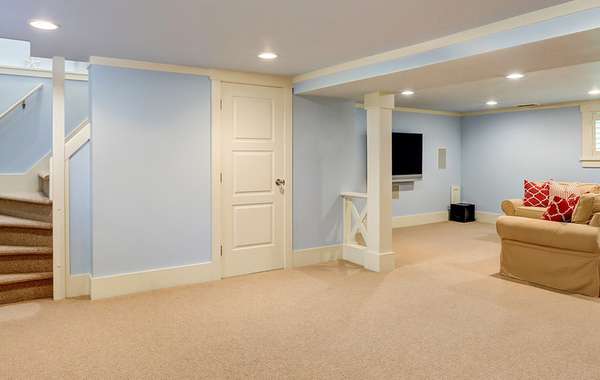
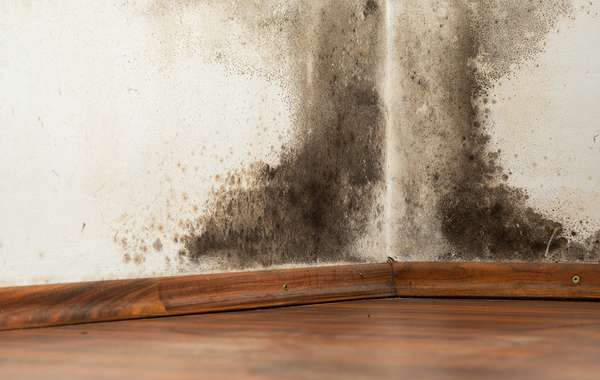
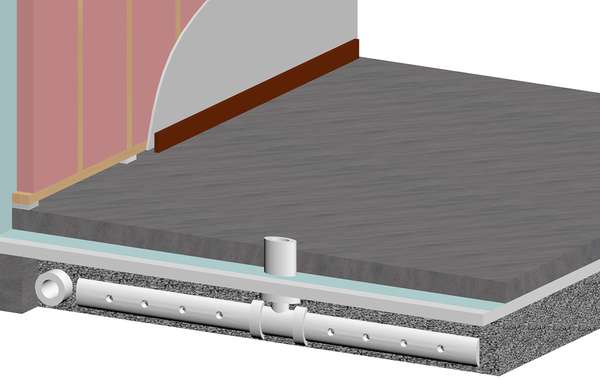
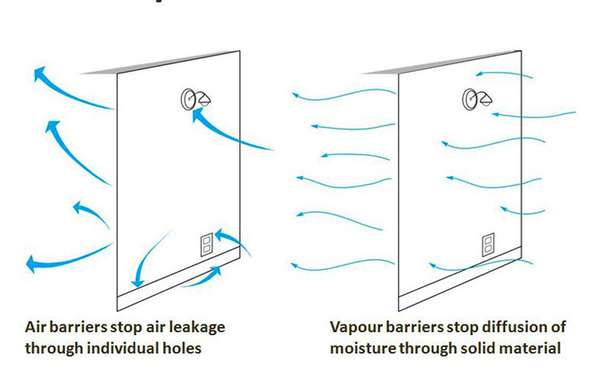
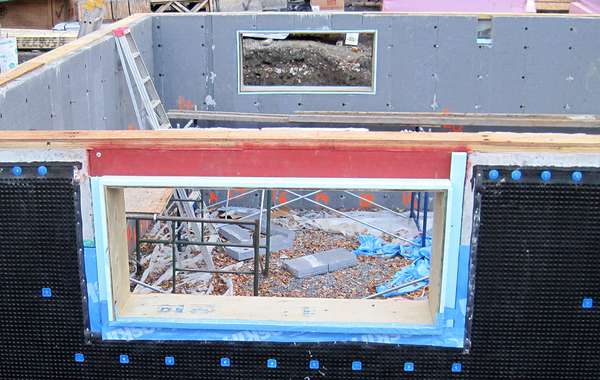
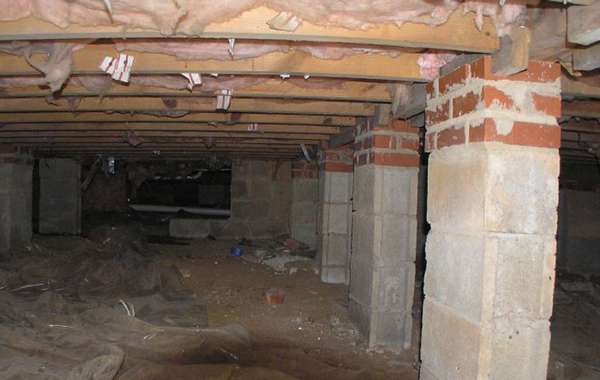
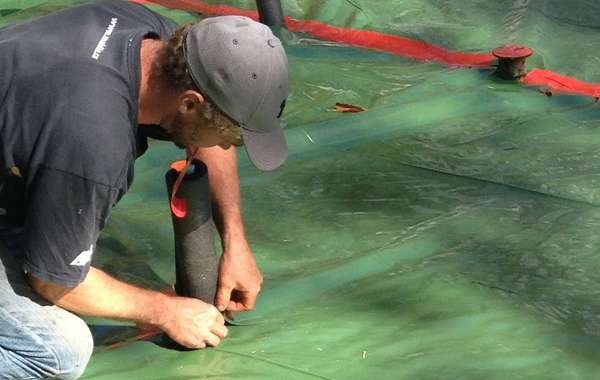
The answer is actually pretty easy but not one you probably want to hear, and I know I risk getting lots of different opinions and comments - but in our opinion you should probably remove the poly vapor barrier.
Any moisture that may have leaked in through unsealed windows would be a drop in the bucket compared to the amount ofwater in the concrete foundation, which takes years to fully dry. And even that can only happen if it is protected with a membrane to prevent it from absorbing more moisture from the ground.
Either there is noexterior moisture protectionseparating concrete from the ground and it will just stay wet forever, or it is protected from absorbing moisture on the outside, but still the only way the moisture in the concrete can dry is to the interior, which is currently being stopped by yourpoly vapor barrier.
So the short story is, despite that fact that so many builders keep putting vapour barriers on the interiors of basement walls, it is the worst thing you can do down there since the main source of moisture is not interior humidity in the air, it's the wet ground and (or) the concrete itself.
Here is an article that will better help you understand why the walls are wet and how renovations should be carried out - ]
How to Prevent Mold When Renovating a Basement
Having to remove all the poly is probably not the news you were hoping for but you are at least fortunate in the sense that there is no drywall on at this point. Most people only find out their basements are rotting many years after they've been finished.
We can help you with whatever steps you take moving forward, so feel free to send along some pics if you can, or at least let us know the following -
Are the wood studs right against the foundation or is there any rigid insulation panels or membrane separating it from the concrete?
外墙是否有防潮喷雾,或有凹膜?Do you getcondensation on windows in the home?All are factors to consider for health and home durability.
你能帮我吗?我们有一个类似的问题,我已经打电话给很多很多人,但不能找到任何人谁理解这个问题或可以提出一个解决方案。雪莱罗斯919-801-1591。
Hi there. I found mold behind my baseboards and have removed bottom sections if drywall to gauge the extent of the problem. In the process, I learned that there is vapour barrier on both sides of the insulation, trapping moisture of course. I know there should only be vapour barrier on one side (in my view, the outside). Do I need to remove all the drywall to remove all the inside layer of vapour barrier, or is removing the bottom inside layer of vapour barrier effective enough to get air flow? I want to fill the most effective thing, not just the easiest. Thanks!
你是对的,在一个墙壁系统中不应该有两个蒸汽屏障,尤其是在地下室。标准的地下室建设通常都是错误的,蒸汽屏障夹在木材和保温材料与潮湿的混凝土中,所以在未来除了一堵烂墙之外,期望任何东西都是不现实的。
If you actually have a vapour barrier separating the concrete and the stud wall then that is a pretty good thing. Read more here about怎样建造地下室才不会发霉. In a perfect world, yes, you would not have that interior vapour barrier, rather just drywall over the insulation and let the wall dry to the interior.
That is really just an over view based on limited info, but you would probably be best to remove the drywall and the interior poly vapour barrier then reapply drywall. With luck and careful disassembly you may be able to reuse some or most of the drywall.
Hello. I am a recent homeowner of a brand new build (single home, 2800sqft, unfinished basement) in Ottawa, Canada. Last weekend I noticed the problem being described on this board. water build up behind the vapour barrier (is there a way to post pictures here??). The moisture is all over the place and apparently it is the same problem for all my immediate neighbours who have homes from the same builder. The builder says this is 'normal' for new builds and would take 1-2 years for the issue to go away and that no damage will happen because of this. They advised me to get a dehumidifier. Firstly, it does not look normal at all. The moisture build up is so much that it's dripping and fiberglass insulation is damp. Secondly, having a dehumidifier run in the summer is a good idea in general, but I think this is a separate issue as the moisture is coming from the OUTSIDE and getting stuck on the barrier. So the dehumidifier solution is a red herring in my opinion. RH at home is controlled between 48%-53%.
I see a black covering on the foundation walls when I move the fiberglass, isn't this supposed to keep moisture out ? If so, then that leads me to believe that there is moisture stuck in there at the time the house was built. I heard of 'wet construction', is this related and can someone explain what it is .
So there are a couple of unknown variables. If there is moisture stuck between the foundation and vapour barrier, how much and how long will it take to dissipate? Is this going to be a reoccurring issue?
我采取的补救措施是:我在防水汽屏障上剪了几个口子,然后放了一个风扇把湿气吹干。用胶带把伤口包扎好,然后等待下一个炎热的日子,看看湿气是否再次出现。
Any advice from experts would be much appreciated!!
Hi Khaled and Marc,
听起来你们都有隔热地下室的墙还没有用干墙砌好。如果是这样,你就该庆幸了。你可以看到水分,那些有干墙的人看不到水分的形成,所以他们不知道完全相同的事情可能会发生,直到新房的保修期过期。简而言之,这就是为什么几乎所有的地下室都有霉味——蒸汽屏障。
告诉你把订书钉取出来,在上面切几个口子,其实是在承认地下室里的防水层并不能阻止湿气进入墙壁,而是阻止湿气流出来。
Vapour barriers first became part of above grade walls many decades ago, and the purpose was to prevent interior moisture ( from cooking, breathing, showering etc) from migrating through walls in winter can causing moisture damage. Allowing, and encouraging that to happen in basements is probably the singles biggest failure in home design and construction I can think of.
As for your question as to how long it will take to dry out - if they put a waterproof membrane on top fo the footing before building the foudation wall, and they put an exterior water proof membrane on the outside (both of which are highly unlikely), then it will take about 5 years to dry out. If they didn't put a footing membrane in particular, it will never dry out. Concrete is porous, so a footing deep in the ground will absorb moisture forever and continue to deposit it in your walls the same way a sponge sitting in a bowl of water will always be wet on the top.
You canread more here about why basements are moldy
And you cansee best practices for durable basement construction here. In that page you will see an image of the footing membrane I mentioned where it describes a“毛细管破裂”。
如果我买了一套新房子,地下室的墙是隔热的,还有一个暴露在外的防潮层,我要做的第一件事就是把所有的墙都拆下来,这样墙就可以干燥了,然后放进除湿器里。问题解决了。
Quick question, if you remove all the poly and then drywall, won't the condensation just build up on the inside of the drywall instead of the poly? Not sure which situation would be worse. Anyone having any luck with this situation? My house is 60 years old. Definitely not new concrete drying out. It only affects the walls with direct sun exposure on very hot days. Thanks!
Hi Mike,
石膏板不会像屏障一样阻挡湿气,它会穿过它。石膏板会吸收水分,但就像家里的任何材料一样,石膏板的相对湿度水平与地下室相同。所以如果你一直开着除湿机,它会保持空气干燥。湿度总是寻求创造“平衡”,这意味着水分会流向不那么干燥的地方。因此,如果空气是干燥的,那么石膏板就能够在空气中“干燥”。
Basement construction set off on the wrong foot with vapor barriers and a lack of protection from ground moisture, so while this isn't the 'ideal' basement, its really the only way to fix it. A dehumidifier is a basement's best friend!
Hi, I am in Kitchener Ontario and had same problem in my 6 months old house basement in early summer. In my case I was seeing water behind back and left side walls near windows. My builder rep told me it's happening as I was running ERV in summer on low setting and suggested to keep it off or run occasionnaly in summers. Anyway in my case after I cut slits roughly 3" in x shapes every 6 inches or so around all moisture areas and kept ERV off while a dehudifier on for couple of months, it all went away and now I don't see any water vapours for over a month.
我试着每隔几天开几个小时的除湿机,希望它能让我的地下室保持干燥。
btw my house is walkout so not sure if that make any difference. So at least what I learn is that make sure you are not running ERV all the time during summer time.
thx
Niaman
Hi, I forgot to mention I have sealed back my vapour barrier with tuck tape after I noticed no more water behind it
Noaman, I don't see how the ERV has anything to do with it. I may be missing something in how you relayed what the contractor told you but I don't see the connection. So, feel free to elaborate, but - if you had moisture behind the poly vapour barrier and you cut holes to let the moisture out and ran a dehumidifier, to me that sounds like what solved the problem. An ERV exchanges exterior air with interior air, it would have no direct effect on a buildup of humidity behind the vapour barrier.
在防水层上开一堆洞会让水分流失,这也证明了防水层在地下室起不到任何作用。也不是不可能,你有其他的一次性的湿气来源,你让它溜走了,但考虑到你把它全部密封起来,密切关注它,因为你可能会发现它再次积聚。
我们的房子是三年前建的。它有一个完整的地下室,有9英尺高的天花板。我们发现地毯/底板上有发霉的湿气痕迹。我们打开墙壁,发现混凝土基础墙和保温材料都湿透了。水真的从墙上流下来了。家里其他地方都没有潮湿的迹象。保修期否认任何我们保持湿度过高的情况(根据我们从恒温器中提取的数据,我们的湿度一直在40%-50%之间。可能会有4万到5万美元的账单被撕下来重新制作。我们被告知,在冬季,我们需要将湿度降低到30%,并用喷雾泡沫替代电池绝缘。我们摧毁了。 This does not seem right. Envelope engineer says there is significant air circulation behind the vapor barrier when furnace fan turned on. Isn't the vapor barrier there to stop warm air from inside home reaching cold air in the wall cavity? Any thoughts. We are desperate for some help. Can send pics /report.
There isn’t much we can do for you directly to get between you and the company in terms of warranty unfortunately. That is devastating I’m sure, very sorry to hear about your situation, and it's far from the first time we've heard about this happening either. How we can help is by laying out the basic principles of building science for you hoping it helps somehow, meaning:
Concrete is very wet when poured. So new basements need a considerable time to dry out. Then as concrete is porous, if it's without moisture protection from the soil or if that protection is compromised (more below) it will continue to absorb moisture and stay wet forever. That’s just physics. Humidity will want to go where it's dry. This is the basic principle of the second law of thermodynamics. Therefore, if a concrete foundation is wet, it will want to dry to the interior of a basement since it can't dry to the exterior as that is wet dirt and/or has a damp proof membrane on there. If on that journey the moisture encounters a vapor barrier while doing so, it will be stopped and saturate any materials in its path or trapped in the middle. It's like putting soup in a tupperware - it's got nowhere to go!
So, if you have a concrete foundation in the ground that is unprotected from absorbing groundwater and moisture or is protected in a manner that's compromised, you will have wet concrete. If you have a stud wall and insulation against wet concrete and cover it with a poly vapor barrier, the lumber or steel stud wall and the insulation in there will get wet. And organic materials or flimsy and thinly galvanised metal studs that stay wet will get moldy and rot. Full stop.
The suggestion that air with moisture content in the area of 40-50% Relative Humidity in a basement will somehow get past a vapor barrier and saturate a concrete wall makes no sense to me - and points to deficiencies in the manner that vapor/air barrier is sealed at best. This level of relative humidity is in any case considered acceptable for residential living spaces in summer - and is only just out of scope for winter. Is the home fitted with an HRV or ERV ventilation?
If the concrete wall is entirely and flawlessly protected from ground water – including a footing membrane, waterproof exterior wall membrane and proper drainage, and left to dry to the interior for many years before interior walls were finished, you couldpossiblyargue that it wasn’t the source of moisture, but, if that was the case, then any moisture that passed through would likely be absorbed by this bone-dry concrete wall rather than running down it.
The consistent opinion of respected building scientists is that poly vapor barriers in a basement placed behind drywall are a recipe for disaster and encourage mold. You can readall about moldy basements here话虽如此,我们还是可以尝试一些方法来避免“把所有东西都撕掉,然后重新开始”的情况。让我们把它称为“撕掉一些碎片,加速干燥以节省工作和金钱”的路线。
Firstly, making a tour of the exterior, ensure that all around the home the damp proofing on the basement wall concrete can be seen above the ground level. A major cause of basement humidity in older properties is incorrectly placed fill or badly graded exterior hard surfaces which channel water down the unprotected sections of basement wall by arriving higher than the damp proofing. If there's no apparent exterior waterproofing (something likethis basement waterproofing is ideal) then ask the developer to show you what they used and take it from there - I've seen this missed or companies still using simple bitumen paint which we consider suboptimal!
Next - if the above looks in order, on balance of probability the humidity you're seeing is simply the residual humidity trapped in the wall - as mentioned above in other postings like Khaled's. In this case, by removing sections of drywall every say 6' and slitting/opening the poly vapor barrier around the basement in a manner that can be carefully taped back up in the future, and running a correctly sized dehumidifier (maybe into a permanent drain to save endless emptying) - in a year or so the perimeter basement walls will dry to the point the problem stops. The mold will die if the relative humidity is low enough - and remember mold spores are always present about us - in a dormant or active state. Not saying for a moment this is ideal - but if this is the cause of humidity, and you don't have the patience to wait for the concrete to dry out before refinishing the basement walls, then theeco-friendly spray foam成本高昂的是,这可能是唯一可行的方法——尽管它只能将水分困在混凝土中,而不是让它消散——而且如果在非常寒冷的气候中,可能会导致潜在的冻结问题!这离理想还很远——但即使是开发人员也不是真的有错,因为他们可能只是按照他们被告知的代码兼容的方式做了(但是,是的,如果他们受过教育并关心这个问题,他们可以做得更好!)
I really hope this helps!
有趣。一年半前我盖了个新家。我们去年12月搬进来,春天的时候,我们注意到地下室的防潮层正滴着湿漉漉的水,打在隔热板上。我们被告知放入一个除湿器,并关闭热交换。我们没有注意到任何不同,所以被告知在塑料蒸汽屏障上开一些缝。缝隙并没有把它弄干,因为它紧靠着绝缘层。所以我们把它拆了。到了秋天,建筑工人回来了,又装上了防潮层。第二个冬天和第一个冬天一样,一切都很好,但到了春天,天气变得又热又潮湿,问题又回来了!这一次我们一定要在三月关掉热交换! Also got the dehumidifier going early. Both years the vapour barrier condensation first started on the sunniest side of the house and wasn't evident where we have a deck or porch. At first! But as the hot humid days went beyond 2 days the problem of condensation was on every wall and even those places with a deck or porch causing shade. Now to be very specific, the condensation is ONLY ABOVE GRADE. The walls are dry below grade. This makes us think that its not a moisture in the soil issue but an insulation or lack thereof issue. When I look beyond the insulation batts there is an insulation boards against the concrete. Then the batt and then the vapour barrier. I am super sensitive to mold and have been sick 28 years which is why I wanted a new build so get away from any mold. We have had water on the lot next to us and our soil has a lot of clay but again this issue is above grade. So again this year the vapour barrier has been cut at the top and is hanging down folding over in half to allow the top half of the wall to dry out. Not sure what to do. I don't want the framing to get moldy. If spray foam insulation fixes this I'll do it but my fear is that I won't know if it works as we were told that if we do spray foam, then we have to cover it up with sheet rock. I'll never know if mold grows behind that and I'm already sick with Lyme disease so I won't notice any new symptoms as I already have them. My builder has built many homes and not had this happen and he doesn't know what is causing it. Which means we don't know how to remedy it. Any suggestions for a permanent once and for all fix?
Hi Teresa, pull the vapour barrier off and leave it off. The source of moisture is the concrete, not the air, so you don't need to protect the wood from relative humidity in the air, that's not the risky source of humidity.
It takes many years for the huge volume of water in concrete to fully evaporate, and your wood studs even come wet as well, so vapour barriers should not be put on basement walls. It's loaded with moisture behind there and it has no where else to go. As you keep seeing, it will retain moisture inside with the wood studs and insulation, and that will lead to rot and mold. The reason being - concrete is pourous, and even if you have the black tar spray on the sides or even a waterproof membrane, your footing is almost certainly sitting unprotected in wet ground and it easily wicks moisture up into the entire concrete wall. It will stay wet forever and keep depositing moisture inside your walls if you keep the vapour barrier on. It simply isn't needed. Let the moisture escape and run a dehumidifier, problem solved.
Installing vapour barriers on basement walls is in our opinion, the biggest mistake make in home construction, and it happens every day. Don't listen to any contractor that wants to put another one up. Read more here, and pass this on to anyone that tries to convince you that you need one, they are simply ill-informed.为什么地下室会发霉以及如何修复它。好运!
谢谢你的建议。因为这是我们在家里的第三个春天,我们注意到只有在春天温度达到20摄氏度,也就是70华氏度,外面变得潮湿的时候才会发生这种情况。但是地下室的墙壁仍然很冷。我们在6个月内从零下20度到80度,所以我们在一周内从春天到夏天!我们在秋天有另一个雨季,但这不会发生在秋天。只有春天,它开始在向阳的朝南的墙上,只有以上的等级。然后,它会扩散到所有地下室的墙壁上(仍然只在地面以上),这样,有遮阳平台和门廊保护的墙壁就能最后获得蒸汽屏障后面的水分。
So what about in winter. Do you suggest we keep the vapour barrier off permanently? I'm just north of New York State in Eastern Ontario. This is our third year in our new home and our builder has been excellent in trying to sort out the issue. Each year when it gets wet, he opens up the vapor barrier so it dries out and then comes back again in the fall to put it back up again. He added insulation around the basement windows last year and we waited to see if that fixed it this spring but unfortunately it didn't. There are places where the soil was added for landscaping and is slightly above the black tar on the exterior of the house so he is going to come dig back the soil around the house to add some more black stuff and we will see if that makes a difference. Would spray foam insulation fix this or would it just cover up a problem so we can't see it. I am super sensitive to mold and built new to get away from it while I treat for mold and lyme.
Hello, I live in Ontario, Canada. My home is about 30 years old. My basement was recently framed to be finished. They left some space between the studs and the concrete foundation wall (so the wood is not touching the concrete), and they laid down some plastic on the floor so the studs don't touch the concrete floor. My contractor has already put pink fiberglass insulation between the studs, but it has not been drywalled. He plans on putting a plastic vapour barrie on top of the insulation, then drywalling. What would you recommend we do at this point to prevent issues?
Hi V B,
I would stop them from doing the vapour barrier. Your concrete walls are almost certainly not properly protected from ground moisture and therefore wet, and wood is an organic material, so if you seal them together with plastic you'll have only one result - mold. This is probably the biggest mistake in home construction and the biggest flaw in the National Building Code, that we are 'required' let alone even allowed to install one.
If you need to install a vapour barrier to appease a building inspector then I would suggest you look into Certainteed Membrain, which is a breathable alternative to 6-mil poly vapour barriers. It looks the same to an inspector but at least it will let some of the moisture out. Here is our page onhow to renovate a basement so it won't develop moldin case you didn't see it in the links above.
So I have mostly the same problem and need some advice.
My basement was finished in about 1999, the house itself is 1938 with a fieldstone foundation. They of course put a vapor barrier (poly sheeting) right behind the drywall/skim coat and then fiberglass batts. I recently noticed some baseboard rot and removed the baseboard to discover the walls baseplate is basically completely rotted away.
I plan to repair it, leave the vapor barrier off. Is it worth pulling off all the other baseboard to check? Is there anything I should do between wall and foundation while I have it open?
sounds like I should consider putting in some kind of vent into stud bays to help dry it all out too.
thanks!
嗨,伊恩,不幸的事实是,如果你在一个地方发生了这种事,那么它很可能发生在你的地下室的其他地方,所以,我会检查一下。当然,关掉蒸汽屏障,这才是问题的真正原因。如果你要把它剥成光秃秃的混凝土我一定要把木柱墙分开。要么增加2英寸的刚性EPS绝缘材料,要么如果你没有足够的空间来用更多的绝缘材料加厚墙壁,我可以再装一个聚苯乙烯屏障,但要把它贴在混凝土上。That way it will separate the wood and insulation from the source of moisture, they way yours and most basements is done - with the vapor barrier sandwhiching the wood in with the moisture is only ever going to lead to rot.
我们在明尼苏达州有一个完整的地下室,地基是经过处理的木材。经过处理的木钉之间是玻璃纤维隔热层。我们想用石膏板来完成地下室的装修。我们应该用什么来做蒸汽屏障?蒸汽屏障会在隔热层的内侧吗?
作为后续问题,你是否推荐一种不同于玻璃纤维的绝缘材料?也许矿棉?
Yes, we much prefermineral wool / Rock wool in basements因为地下室通常更容易积聚水分,而矿棉可以很好地解决这个问题。As for vapor barrier in your comment above, I would use NO vapor barrier, or at the least choose one that lets moisture escape such asCertainteed breathable vapor barriers. See our page onhow to build basements so they won't develop mold here.
我住在渥太华,正在装修地下室。一部分是我有多个水族箱的区域,产生大量的内部湿度。我使用了木钉和岩棉,在覆盖混凝土基础墙的沥青纸上留下了大约一英寸的空隙。我没有在地下室的部分安装防蒸汽墙,我打算用石膏板。我在水族馆部分安装了一个蒸汽屏障。
The area with no vapour barrier started to bleed water behind the insulation when ny dehumidifier stopped functioning. The idea was to contain the internally generated moisture from getting to the drywalled area and use an exhaust fan and dehumdifier in the area that has vapour barrier. Before completing the headers with VB I noticed a small area that had some moisture and mould. I removed a section of the insulation and it was dry. Contrast that to the other area (no VB) and the insulation was soaked. This was winter with outside temperatures between -5 and -10C.
So it seems that VB actually helped prevent warm moist air from contacting the cold concrete wall and condensing. Since then I have installed VB on the walls that are soon to be drywalled. My feeling is that this is incorrect yet my pre drywall experience suggests otherwise.
在我干墙之前,我当然希望得到东西正确,所以请建议。这所房子已经有6年的历史了,我看不出任何湿气从混凝土墙中释放出来的迹象。I believe the mositure is generated internally and flowing through the construction material and onto the cold concrete, or at least it was until I installed the VB (6mm Poly)
嗨,迈克。很棒的文章。消除VB背后的逻辑对我来说很有意义;然而,我仍然不确定下一步再绝缘。Details below:
位置:中部AB——冬季寒冷,夏季相当潮湿。
Summer 2017: Complete reno, and 450 sq' addition, full basement. New fiberglass batt insulation and poly VB in original & new basement. Spray foam on rim joists. No drywall. Excavated entire perimeter for weeping tile and applied black tar-like sealant on outside from bottom to ground-level.
Spring 2018: 2 water puddles on floor, one in original basement, one in new. Problem was ice on cement behind insulation. Had insulators return to make sure rim joist insulation completely covered top plate on basement framing. To date, (Aug 2021) no water on floor.
2020年夏天:除湿器退出:VB的两个区域的绝缘侧有冷凝,每个区域大约10英尺,一个在原有的地下室墙壁上,一个在新的一段。凝结在地面上。Bought new big dehumidifier, and condensation dissipated.
Summer 2021: Condensation appeared again in same places during hot weather, then dissipated in a few weeks. Another hot spell, and condensation appeared again on the new wall, but not the original. Would not dissipate, so I slit VB in several places. Water evaporated, but insulation stinks -- musty.
现在该做什么?
Plan to throw out all VB and replace fiberglass with rock wool, or maybe spray foam. I would like to put a layer of foam board behind the studs and then rock will in front of that, but I would have to remove all the studs, so probably won't.
除湿机在夏天一天运行几个小时,甚至在冬天也经常运行。迈克认为,湿气可能是通过墙壁底部的水泥吸上来的。所以我可以用油漆密封胶或者橡胶密封胶来涂内墙吗?但如果我这样做了,如果湿气只能流到地面以上的外部,我是否会冒着冬天被冻僵和墙壁开裂的风险?这对我来说是个大问题。如果我在阿尔伯塔省零下20到30度的冬天这样做会不会找麻烦?
或者:我读过一篇关于喷雾泡沫的文章——以及负面气体排放的可能性,但也许这是阻止或减缓湿气流入地下室的最好方法,而不是在墙内涂密封胶和使用岩棉?按照目前的情况,如果我们的除湿机退出,RH很快就会上升到70%以上。这就说得通了,湿气肯定是从地下室的墙壁底部吸上来的。然而,当我们安装抽水瓦时,沟渠中没有地下水湿气。看起来我要花点钱了,我想把它做好。
如果你有时间,我想听听你的看法。
Thanks. Hugh
你好,休,关于你的问题——“如果冬天湿气只能流到地面以上的外部,我是否会冒着被冻裂的风险?”
Even if it doesn't *seem* wet in the ground, it is still in all cases, comparatively wet, unless you are in a climate which recieves virtually no rainfall and I don't think that's the case where you live. Letting moisture evaporate inwards will not actually dry the wall much at all, since that moisture will just be replaced. So don't worry that you are damaging your home by preventing moisture from entering through your foundation walls. I think painting on some sort of waterproof coating will work fine.
喷雾泡沫也很好用。我们不喜欢它作为建筑解决方案,因为事实是,任何材料已经喷洒泡沫最终将填埋,但至少它是更可持续的,因为现在的转变为更有害的发泡剂。如果你走这条路,我会和你选择的公司联系,确保他们已经改用对气候友好的吹风机。
HI Mike. Thank you very much for posting a response to my question. You are right that we are not in a particularly dry area. While we don't usually get ground water pooling when we dig, the ground is damp as we go down, so it is good to know that we can put some kind of a moisture barrier directly onto the cement without concern.
To test moisture influx through the wall and floor, I tried the tinfoil taped to the wall (and floor) test to see if moisture would collect on it. Nothing. I left it on for a few days and could detect no dampness on it at all when I took it off. I don't know if that means anything, though, because without the dehumidifier, the basement RH levels go zooming up, so the moisture is coming from somewhere, and I can't think of any source other than walls or floor. So maybe we will have to try painting on a barrier -- or perhaps go with spray foam. We'll have to look again at spray foam pros and cons and make a decision.
Again, I appreciate the help. Your website articles and question responses have provided me with quite a bit of valuable insight.
Glad it helped Hugh. Just because you aren't seeing droplets form on the tinfoil doesn't mean it isn't wet and evaporating. Unless the foundation footing has been entirely encapsulated in a waterproof membrane, which almost never happens, then the concrete is without a doubt wet enough to allow moisture to evaporate inwards. The reading on your dehumidifier is the real answer, not the tinfoil.
A dehumififier doesn't consume a lot of energy, in fact the less moisture in the air the less energy is required for heating and cooling, so keep it running and don't worry that you are wasting energy. It is not only saving your basement from getting moldy, it is most likely saving you money or at least paying for itself by removing moisture from the air that you don't have to pay to heat.
I had, in fact, been concerned about the energy usage of the constantly running dehumidifier, but had not thought of the idea that less humid air makes heating easier. So thanks for that perspective. I think I'm still going to go ahead and try to lessen the moisture infiltration by applying either spray foam or a paint-on moisture barrier on the interior of the cement walls. It looks like the paint-on solutions are either a latex sealant or a thick rubberized material like "Liquid Rubber". Do you happen to know if there is a particular product that is recommended for this purpose? I'm sometimes a little skeptical about the durability of latex paint products.
所以我的家建在一座山上,卧室在一楼的后面(就像一个可以走出去的地下室)。卧室的地板是混凝土板,有木框架的墙壁。原来建筑框架的一个角落里,木壁板的底部、木框架的窗台和木钉的底部都在腐烂,因为等级发生了变化,土壤超过了混凝土的水平。我正在从外部取出损坏,替换一个小(12英寸高x 5英尺宽)的部分与压力处理木材。但我注意到在这些螺柱的内部有一个蒸汽屏障,上面有石膏板,从后面我可以看到水分被困在那里。我在里面的时候应该把那部分蒸汽屏障切掉吗?从技术上讲,它是在平地之上,但靠近地面。我不想打开里面的墙,这样我就无法摆脱整个蒸汽屏障。佛蒙特州的天气很冷,所以这也是一个因素。
HI Alice,
How old is the house? It is fairly common to see moisture behind vapor barriers in fairly new homes, as they are built with wet lumber then wrapped in plastic so its no surprise that it takes a long time for moisture to dissipate.
在你的情况下,我猜你说的这个潮湿的蒸汽屏障部分离损坏的墙壁部分很近?如果附近的框架构件已经饱和和腐烂,那么你在那里看到潮湿的迹象是有道理的。在佛蒙特州这样寒冷的气候下,你需要一个蒸汽屏障,所以我不认为移除它是答案。你修理的时候它会变干吗?当你更换浸透和腐烂的木材时,我希望能切断湿气的来源。一个额外的建议也许,是得到窑干木材的部分,或找到一个人,可以做少量为你,这样你开始与一些骨头干而不是相当潮湿,这是如何木材运输到达。我只是把它放在那里,因为我不知道损坏的程度或有多湿,但这是一个解决方案。
由于有大量的水从山上流下来的风险,所以靠在山底的建筑物不太理想。这很难想象,但根据我对你的情况的理解,我想说最重要的是远离泥土、地面覆盖物和任何水。确保从任何有机材料到你的墙板底部至少有8英寸的距离,如果可以的话,在后面挖一条小沟作为额外的安全措施。
Yes! That makes sense. Yes, definitely planning on digging out some of the grade and putting in some drainage stone. It's a 1960s house, without a lot of insulation, just regular fiberglass. I do think the moisture was coming from where the wood was wet from rotting - hopefully it will dry out now!
太好了,希望这行得通,爱丽丝!
Hi we live in the NE in a 1963 split-level home. The sublevel "basement" was a finished livable space with a bedroom, bathroom, media room, and laundry room. We experienced flooding from a recent hurricane (poured in from the outside, not from the ground up) and we quickly removed all of our flooring and halfway up our drywall to reveal our concrete foundation and also cinderblock exterior walls. This revealed wood framing directly on the cinderblock with pink fiberglass insulation-- the drywall was then attached on top. There is no vapor barrier on the walls currently. I do not recall during demolition if there was a vapor barrier on the concrete foundation below the archeological layers of linoleum, plywood, and engineered hardwood.
Walls:We are now ready to put in new floors and walls. Ideally, I would have the exterior walls reframed and do as you suggest: put rigid rockwool sheets directly on the cinderblock and then frame over it. If this is cost-prohibitive what would be a good alternative? Is rockwool batting in between the existing studs sufficient or would this defeat the purpose? The wood studs appear to be in fine condition.
Floors:至于地板,我们想把软木地板直接铺在混凝土上。软木地板公司说没问题,但是我们需要水泥干6个月。考虑到混凝土地基可能总是在“吸干”水分,你建议在地板上使用任何类型的蒸汽屏障或坚硬的岩棉吗?不是为了隔热,因为软木是一种天然的绝缘体,而是为了防潮层。
Side note:我们可能无意中扯掉了含油毡的石棉。混凝土基础覆盖着黑色胶水,也可能含有石棉。石棉修复公司说,只要我们不打磨它,不在上面铺地板,就应该没问题。你是否建议先用某种密封剂/油漆“封装”石棉?或者用这种方法来捕获蒸汽?
Thanks for this website and all of the helpful information-- it may keep us from making costly mistakes!
嗨,玛丽亚,谢谢你的赞美,很高兴你觉得它很有帮助!By ' the NE' I assume you mean the North East and if not then probably Nebraska, both of which are cold so the answer applies -
On walls:
砖块非常多孔,与建筑材料和房屋的湿度水平相比,地面几乎总是“潮湿”的,所以最好尽可能地将水分排除在外。如果你的螺柱状态良好,那就太好了,但如果你能做到的话,我会试着在框架墙后面安装一个6毫米聚蒸汽屏障。这将有助于保持木材和绝缘材料干燥。矿棉可以处理一些潮湿,但干燥总是更好的住宅建筑。不使用蒸汽屏障将木材与混凝土密封会有很大的帮助,但更好的是通过在它应该在的地方使用蒸汽屏障将其与混凝土隔开来保持木材和地面中的水分。
On floors:
软木是绝缘体,但在地板的厚度,它不会增加太多。所以如果你有足够的空间和预算,我想加一些绝缘材料。是的,它总是会吸走地面上的湿气,所以我会像关心软木地板本身一样关心粘合剂的寿命。如果你从同一家公司购买了这两种材料,请查明是否有保修,并特别询问粘合剂的情况,以及如果混凝土没有完全干燥,它是否会保持粘附。我倾向于铺设一个塑料屏障,木地板,再铺上地板。
供你参考——软木每英寸在R3和R4之间,但木材每英寸大约只有R1,所以带有软木顶层的工程地板可能总共只有R1,所以你仍然会感到脚冷和大量的热量损失。厚度约为3/16的软木瓷砖提供的效果更差。我希望寒冷气候下的地板至少要达到R12(或更高),这样既能让脚舒服,又能提高能源效率。
On asbestos:
We cannot speak to asbestos safety, so I would follow the guidance of industry professionals. Yes I would seal the floor if I suspected it had asbestos that wasn’t being removed, if it becomes waterproofed in the process that’s great, keeping moisture down is best.
November 15, 2021 from Ottawa, Canada.
Greetings Mike, this is our 1st post on this great site. Hello to all who post here. Hope you and your families are well.
迈克,请帮忙。我们已经回顾了这个帖子上的许多精彩的帖子,并学到了很多。遵命!
Been in contact with Tarion for 5.5 years so far. House is 5 years old, a walk out to on grade. House itself is great. I recently learned I have mold in my body.
我将从场地开始,因为分级问题可能会影响到靠近地基的隔热层内部的湿度。有一个臭名昭著的完全封闭的水汽屏障。在靠近内部的蒸汽屏障内部没有水分。
主要的分级问题:由于开发商将房屋建得很低,且后院有地表水池(在地块上超过4英寸,平坦或负等级的洼地,一些地区没有洼地),水应该根据批准的分级计划(唯一的地表水分散选择)流过后挡土墙,但它没有。粘土,水就在那里。房子就坐落在坚硬的岩石之上,所以除了地基之外,水无处可去。由于分级失败,市政府让开发商修复了我的地块和邻近的地块。没有工作。房子最糟糕的角落砖下已经剥落,看起来像水渍,剥落正在脱落。我们已经疲于对付这个5年前的文件了。
然后,我知道我有霉菌。
The basement is 3/4 finished, it was finished by the builder within a year of the foundation being poured. We have carpet in the finished area because the builder did not provide any option. The finished basement is awesome.
Went to Tarion they immediately jumped. The builder paid for a mold assessor to come in. They did air sampling upstairs and in the basement. The vapour barrier was opened in 4 locations and all had moisture. We are awaiting the report. The assessor did seem peturbed.
We keep a dehumidifier going from May to November under 50. There is no water on the floors, walls, windows etc. We see no stains anywhere on the finished drywall. We do use the HRV. There are 2 layers of insulation, black film on the concrete walls covered by the vapour barrier. The inner layer of insulation next to the black film is wet for many feet above the basement floor. It smells musty but could not see any signs of mold.
Mike
Thanks for your help!
嗨,Cindy,很高兴帮你,但是不知道你的问题是什么。你是问外面怎么排水,还是里面怎么排水?我想知道你现在处于什么阶段,你需要做的下一个决定是什么。如果你和这家公司开了这么长时间的文件,我理解这一定很令人沮丧,但听起来他们已经承担了责任,这意味着他们将承担维修的经济责任。如果是我,我发现地下室墙壁的蒸汽屏障后面有湿气,我会想把所有的墙都拆下来,重新正确地隔热。让我们知道报告说了什么,以及我们能提供什么帮助。We can't do much for getting in the mix between a home owner and the company that built the home, the best we can do is give you unbiased opinions as to the best way to proceed with repairs.
November 26, 2021
问候迈克!感谢您以上的回复。建筑工,模具评估师和工程师刚离开我们家。这所房子是罢工时的平房。由于分级问题,房子周围有很多潮湿的土壤。由于房子坐落在山脊上,混凝土地基下面有坚固的岩石(这就是为什么建造者必须安装氡气管道)。他们在多个地方打开了石膏板和蒸汽屏障。
确认我体内有霉菌毒素。我已经退休6年了,所以除了我的新房子,我不会经常在别的房子里待上一段时间。
Here goes:
* Mold smelling in the basement
* Not elevated mold in the basement, but slightly elevated on main floor (the mold guy said garbage causes this?????). No evidence of any leakages on the main floor level.
*在地下室,防潮层内部不能有湿气。在防潮层旁边的绝缘一侧没有湿气。
*在地下室地面标高处,附着在混凝土基础墙上的塑料护套上有明显的水分。你擦一擦你的手,它就会被水覆盖。靠近地基一侧的隔热层非常潮湿——离地面大约2英尺高。这发生在房子的三面。房子里有股霉味。
* 2x4上没有霉菌的视觉标志,但在一些位置的塑料保护套上有黑色霉菌斑点,墙上有中等高度(没有“专家”强调这一点)。
* The moisture gets progressively less the higher you go on the wall, but from the floor to the ceiling in the basement, it is all damp to varying degrees.
* No mold on the inside of the drywall, the drywall pieces were taken off at the floor level where there is substantive moisture
__________________________________________
We highlighted to the Engineer the issues of the grading and the fact the soil around the foundation is constantly wet (where a downspout discharges water), except in very dry periods. In the worst corner, the parging shows water marks and pieces of the parging are popping off. The Engineer raised his eyebrows. Then he mentioned hydrostatic water issues, which I googled asap.
没有人说过地下室的潮湿——没有任何借口或试图解释这一点。他们要求暂时关闭蒸汽屏障,不完全重新完成石膏板开口................................
Mike what do you think?
Your assessment would be greatly appreciated indeed.
Hugs
Hi Cindy,
Without seeing it I can only offer you general advice, though I am surprised none of these pros thought much of wet insulation. It is possible that the water is wicking up from the footing, but also possible that it is saturated at the bottom due to it draining down.
It boils down to this – houses should be built in a way that walls are dry; if the walls are wet inside, something wasn’t done right, full stop. Often times that is simply the inclusion of a vapour barrier behind the drywall on basement walls, which desite being common practice should never be done as it is nothing but a disaster waiting to happen.
So the short story on basements –
墙壁无法从外部干燥,因为它们被埋在潮湿的泥土中。所以它们需要能够干燥到内部,而蒸汽屏障阻止了这一点。但在寒冷的气候中,大多数建筑规范都要求使用这种材料,所以不幸的是,当这些材料发霉时,建筑商往往可以把责任推给这种材料。
根据我对你地下室的了解,我可能会做以下的事情——拆除石膏板、绝缘材料和蒸汽屏障。用除湿器把墙弄干。
See if you can get a vapour barrier BEHIND the stud wall. That will keep the moisture in the concrete and keep the wood and insulation dry. Re-install insulation and drywall, do NOT put a vapour barrier behind the drywall. If your builder tries to talk you into it, refuse. Sealing insulation and wood against a wet concrete wall with a sheet of plastic should never have been allowed to happen, let alone be required, as it is the perfect environment to grow mold, and I don’t think you want to do that any more. If you are forced to put a vapour barrier on your basement walls by a building inspector, use a breathable vapour barrier instead. This will appease inspectors but allow moisture to escape.
Think about a maybe sump pump and battery backup to prevent flooridg, also grade the exterior way from the house, and extend any downspouts so they drain far from the home. We are a bit limited in what we can say as these other proffesionals have the advantage of seeing it, but at the least the info here should give you enough knowledge to question them. Insulation should not be wet, and that should at the very least be acknowledged and investigated. I hope that helps at least a bit at least!
Mike, hugs and thanks and kisses!
You are so darn smart. We got a wonderful mold specialist in and took samples. There is mold in multiple locations, located on the white plastic sheathing that lies against the concrete foundation wall and a bit on the insulation. There is significant water on the sheathing from about 2 feet down to the floor, it is all wet and there are bubbles of water on the sheathing. The insulation is quite wet.
我们的模具专家正在写一份严厉的报告最后会是塔利昂。与此同时,我们将看看建筑工人和他们的专家们会说些什么,但他们离开时看起来并不高兴。
Thankfully we have kept Tarion engaged for 5 years on the surface water issues and now the mold, so little wiggle room for them or the builder.
My husband and I are very sad because now we do not trust our house - before we did not trust the lot due to the grading, but now the entire house is an enemy. What a sad thing.
我将您的意见发送给我们的模具专家,以便他可以评估如何使用您的专业知识(当然没有名字)。
会随时通知里克的。上帝保佑你和你在这个论坛上的志愿者精神。
xoxoxoxoxoxo
辛迪,这是一个非常友好和周到的答复。很高兴能帮上忙,我希望这件事能解决,这样你就能重新享受你的家了。If there are other issues that pop up by all means pop a question on ourdiscussion board. Good luck!
麦克-新消息!!
There is excess water in the wall cavities all around the entire house.
“最靠近地板的隔热层非常潮湿,一些缠结的纤维里可能会挤出水滴。在安装在绝缘材料后面的名为BP Air-Lock的白色护套上也可以看到小水珠(附件1,照片1和2)。从公司网站上可以看到,“BP Air-Lock是一种无纺布聚烯烃膜,一面涂有透气涂层。BP Air-Lock含有紫外线抑制剂,适用于长达180天的短期户外应用”(https://bpcan.com/produits/air-lock-breathable-sheating-membrane/)。对场地的快速检查表明,这种材料被设计为外部空气和水分屏障。在较高的高度,在头部以上的高度,可以感觉到绝缘后面的BP气闸上有水,可能还有霜或冰。还注意到绝缘体和基础之间没有空气间隙,限制了墙腔内的空气流通。无论是否有机械干预,这都可能阻碍2壁腔的脱水,并随着时间的推移导致霉菌的生长增加。在地下室地板和地基之间安装了一个大约5-6英寸高的黑色凹陷排,这可能是设计师或施工人员预期需要从墙洞中排水(附件1,图1)。RIFDS不记得之前在其检查过的其他住宅中发现这种产品被安装在地板和地基的连接处。英国石油公司的气闸位于排的后面,在到达地面之前终止。”
Rick - our mould consultant wonders if the builder knew there would be problems in advance (yikes) and installed this plastic platoon at the junction of the foundation wall and floor to guide the water down between the crack between the wall and floor.
我们的团队(我们现在签约了一名混凝土和岩土工程师)认为发生了这样的事情:a)是的,建筑商知道他们在岩石附近建造房屋;b)是的,静水压力使房屋和岩石之间的水顺着裂缝涌上来。We have major surface water and grading issues in the backyard
瑞克,你觉得这是怎么回事?
嗨,辛迪,关于静水压力的结论听起来可能是问题所在。建筑公司在不明智的情况下强行推进,这并非闻所未闻,所以他们可能知道存在问题。我想在这一点上,我可能无法提供任何有用的建议,因为情况变得越来越复杂。
我可以提供一些关于如何建造一个耐用的地下室的一般信息(如上所示),但当涉及到做一些建筑鉴证来确定地下室墙壁的水分来源时,我认为你会有一个现场的岩土工程师,他可以看到真正的问题。我不是想把你们晾在一边,但我觉得在这一点上,我只是觉得我没有什么智慧能超越你们团队所能提供的。希望你能解决这个问题!
瑞克,非常感谢你的帮助!
Yes indeed, I think we have enough information to make the builder squirm. Our consultants also recommended spray foam, not insulation.
Rick keep well and thank you for your public service, Blessings on You!
加拿大中部的温尼伯也有类似的情况。今年春天,我注意到我们装修好的地下室里有一个角落的地毯是湿的。我拆除了石膏板、聚蒸汽屏障和隔热层,发现墙角浇筑的混凝土墙上结了一层厚厚的霜/冰。用除湿机让它变干。但需要知道如何正确地重新粉刷墙壁。湿气是从外面进来的,还是热空气凝结在冰冷的混凝土墙上?计划在饰钉之间使用岩棉。我应该在石锅顶部使用防潮层,在石膏板之间使用螺柱吗?或者根本没有蒸汽屏障?墙面要不要先刷一层橡胶膜? Any ideas?
Oh, failed to mention that this is not new construction. The house is about 70 years old.
Hi: we renovated the basement of our 60 yr old house. The outside of the wall is exposed to several hours of direct sunlight and heat in the summer. We have a cement block foundation and moisture is present between the poly vapor barrier and the batt insulation (not pink). The moisture runs down between the insulation and vapor barrier to the 2x4 bottom plate on the basement floor (cement). The 2x4 studs are about 1" or less from the cement wall with insulation, then the poly vapor barrier, then drywall. Once I opened the lower 3 feet of wall where the mold was, we had no moisture for over 1 year. Now the moisture has reappeared. The wall is still open. Any suggestions would be most appreciated. There is a heating/ac vent in the ceiling nearby. I wonder if the difference between the hot outside and cool inside is contributing to the issue. It was hot today (30 degrees C)
Hey there,
New to the board, looking for tips on this potential disaster in my basement. Please excuse any ignoranance with terminology in advance! I bought a flipped house 2 years ago, here's the specs:
- Located on Eastern Canada
- Poured concrete foundation
- 36 years old
- No HRV / ERV, relatively tight house. - No vapour barrier under concrete slab and no barrier on exterior foundarion walls.
- Wall assembly is: foundation, fibreglass insulation, vapour barrier and then drywall.
- 2台无管道迷你分体式热泵,大部分时间在地下室运行
- 2 dehunifers that are run in the summer, relative humidity is around 45-60 and the space usually always feels comfortable
- Non pressure treated wood framed
The basement was formally unfinished, but was finished during the flip. Anyway, I had to go into the walls to install something when I discovered water beading on the INSIDE of the vapour barrier, with moist insulation just behind (drywall is bone dry) I decided to check the entire basement and found the same uniform moisture on 3 of 4 walls so the issue appears to be almost everywhere.
So my question is, how do I rectify the situation? The basement feels completely dry and I never would have noticed moisture issues unless I pulled the drywall off. I'm interested in a long term fix but also would entertain stop gap / work arounds if threes any to be had. We use the space and would need to have it livable.
Thank you very much in advance,
Josh